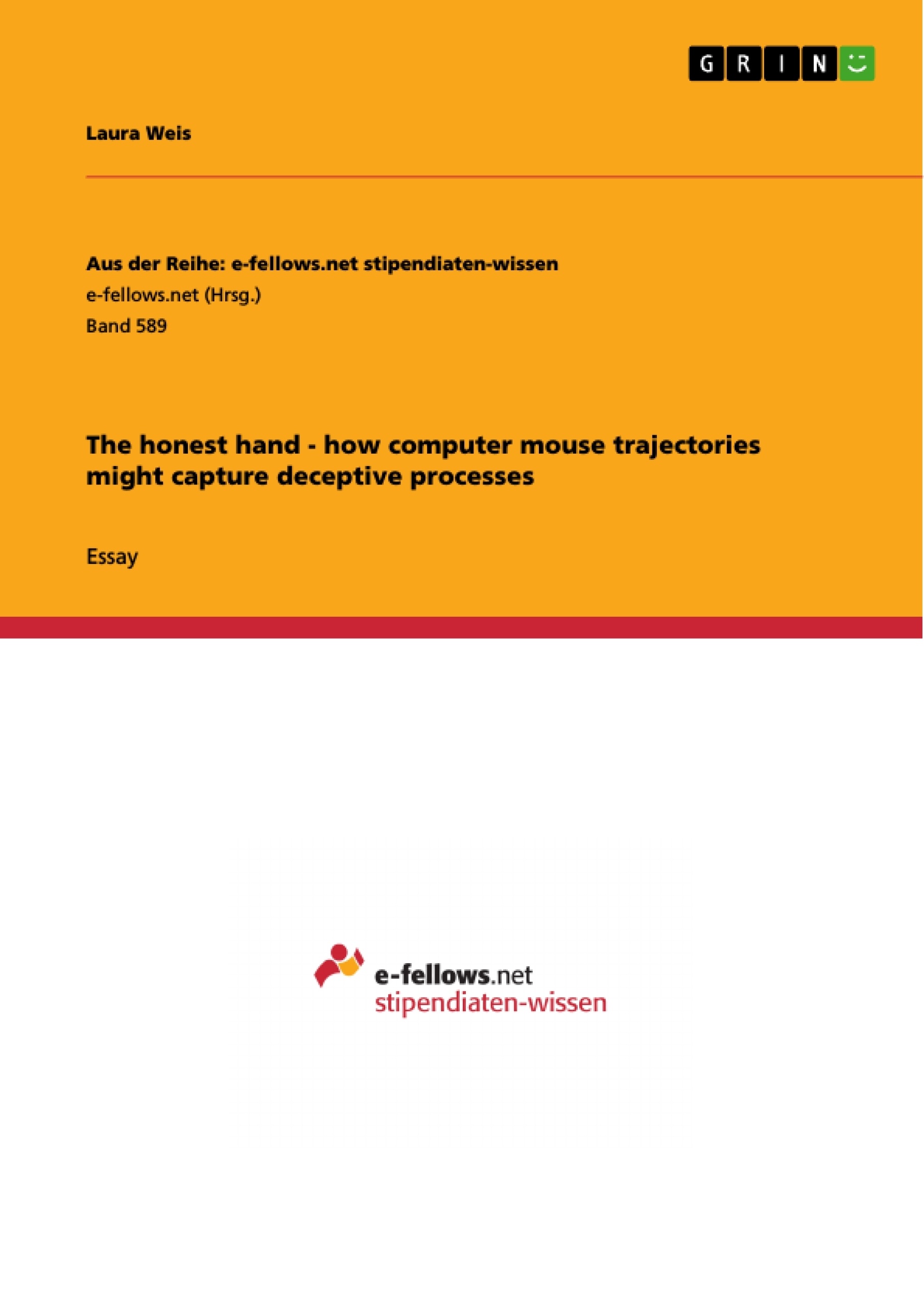Assuming that motor action might help understanding underlying psychological processes, the current study attempts to identify deceptive behaviour by tracking the dynamics of hand movements during a computer-sorting task. Participants were asked to deceive by pretending that some of the items they “owned” have been paid for even though they were stolen. Analysis of participants’ streaming x-, y- mouse coordinates, during decision-making suggested that movement trajectories might indeed reveal underlying cognitive processes during deception. Statistical indicators of curvature and reaction times, including area-under- the-curve (AUC) and maximum deviation (MD) implied that there was as greater cognitive competition during deceptive than during truthful responding. Deceptive responds were made more slowly, with a stronger curvature tendency towards the alternate truthful answer. Non-deceptive responding was associated with shorter reaction times and more linear response trajectories. This supports prior research indicating that action dynamic measures might capture deceptive processes.
Inhaltsverzeichnis (Table of Contents)
- Abstract
- Introduction
- Motor Responses and Cognition
- Action Dynamics and Deception
- Mouse-Tracking
- Deception: Background
- Present Research
Zielsetzung und Themenschwerpunkte (Objectives and Key Themes)
This study investigates the potential of computer mouse trajectories to identify deceptive behavior. By tracking hand movements during a computer-sorting task, the research aims to reveal whether movement dynamics can expose underlying cognitive processes involved in deception.
- The relationship between motor actions and cognitive processes, particularly in relation to deception.
- The use of mouse-tracking technology as a tool for capturing and analyzing action dynamics.
- The potential of movement trajectories to reveal the cognitive competition between truthful and deceptive responses.
- The identification of specific indicators within mouse trajectory data that might differentiate deceptive from truthful responses.
- The application of these findings to real-world scenarios involving deception, such as legal contexts.
Zusammenfassung der Kapitel (Chapter Summaries)
- Abstract: This chapter presents a brief overview of the study's objectives, methods, and main findings, focusing on the use of mouse trajectories to detect deceptive behavior in a computer-sorting task.
- Introduction: This chapter provides a general introduction to the study, outlining the theoretical framework for understanding the relationship between motor actions and cognition, particularly in the context of deception.
- Motor Responses and Cognition: This chapter explores the growing body of evidence supporting the interconnectedness of motor responses and cognitive processes, drawing upon studies that have investigated the relationship between action dynamics and cognitive operations.
- Action Dynamics and Deception: This chapter delves into the use of action dynamics, particularly hand movements, to detect deception. It highlights prior research demonstrating that movement trajectories can reveal underlying cognitive processes involved in deceptive responding.
- Mouse-Tracking: This chapter discusses the advantages and effectiveness of mouse-tracking as a method for studying action dynamics. It emphasizes the benefits of mouse-tracking over other methods, such as eye-tracking, in terms of data capture and user-friendliness.
- Deception: Background: This chapter examines the significance of deception in legal contexts and discusses the challenges associated with traditional methods of lie detection. It highlights the limitations of nonverbal cues and the need for more quantifiable and reliable approaches.
- Present Research: This chapter outlines the specific research question, hypotheses, and methodology of the current study. It details the experimental design, participant recruitment, task instructions, and data analysis techniques used to investigate the relationship between mouse trajectories and deceptive behavior.
Schlüsselwörter (Keywords)
This research focuses on the intersection of motor actions, cognition, and deception. Key concepts include mouse-tracking, action dynamics, trajectory analysis, cognitive competition, deceptive responding, and the potential application of these findings to legal contexts. The study aims to contribute to the understanding of how subtle movement patterns can reveal underlying cognitive processes, particularly in situations involving deception.
- Quote paper
- Laura Weis (Author), 2012, The honest hand - how computer mouse trajectories might capture deceptive processes, Munich, GRIN Verlag, https://www.grin.com/document/205918



